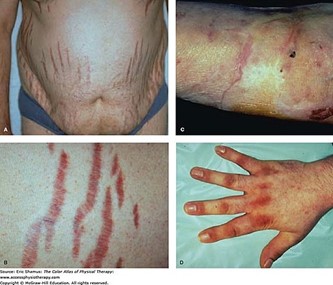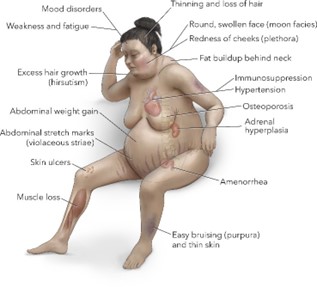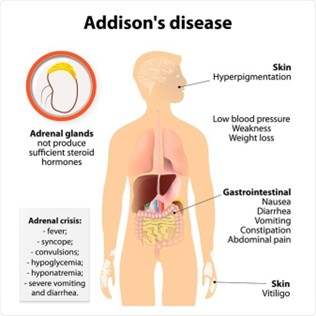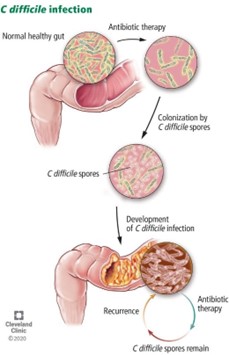A nursing assessment of a patient with Cushing syndrome reveals that the patient has truncal obesity and thin and legs. An additional manifestation of Cushing syndrome that the nurse would expect to find is:
decreased axillary and pubic hair.
chronically low blood pressure,
bronzed appearance of the skin.
purplish red streaks on the abdomen.
The Correct Answer is D
Cushing syndrome is a hormonal disorder caused by prolonged exposure to high levels of cortisol hormone in the body. It can cause a variety of physical manifestations, including truncal obesity, thin arms, and legs, decreased axillary and pubic hair, hypertension, glucose intolerance, osteoporosis, and purple striae (stretch marks) on the abdomen.
Out of the options given, the nurse would expect to find purplish-red streaks on the abdomen as an additional manifestation of Cushing syndrome.


Nursing Test Bank
Naxlex Comprehensive Predictor Exams
Related Questions
Correct Answer is B
Explanation
The statement "I had the stomach flu earlier this week and couldn't take the hydrocortisone" indicates that the patient may not be adhering to their prescribed medication regimen, which can lead to an Addisonian crisis. Therefore, the nursing diagnosis of ineffective therapeutic regimen management related to lack of knowledge of management of the condition is appropriate.
Addison’s disease is a condition in which the adrenal glands do not produce enough cortisol and aldosterone. Hydrocortisone is a glucocorticoid medication that is often used to replace the cortisol that the adrenal glands are not producing. In the Addisonian crisis, the body is unable to produce the necessary levels of cortisol and aldosterone, which can lead to potentially life-threatening complications such as hypotension, dehydration, and electrolyte imbalances.
The other statements may indicate areas where patient education is needed, but they do not directly relate to the immediate risk of an Addisonian crisis.

Correct Answer is C
Explanation
Clostridium difficile is a highly contagious bacteria that can spread easily from person to person. The patient should be placed in a private room to prevent the spread of the infection to other patients. Contact isolation precautions should also be implemented, which involves wearing gloves and a gown when entering the patient's room, as well as washing hands thoroughly after leaving the room.
Options a and b are not directly related to the care of a patient with Clostridium difficile. Option d is also not directly related, although proper food handling and storage can help prevent the spread of other types of infections.


Whether you are a student looking to ace your exams or a practicing nurse seeking to enhance your expertise , our nursing education contents will empower you with the confidence and competence to make a difference in the lives of patients and become a respected leader in the healthcare field.
Visit Naxlex, invest in your future and unlock endless possibilities with our unparalleled nursing education contents today
Report Wrong Answer on the Current Question
Do you disagree with the answer? If yes, what is your expected answer? Explain.
Kindly be descriptive with the issue you are facing.
